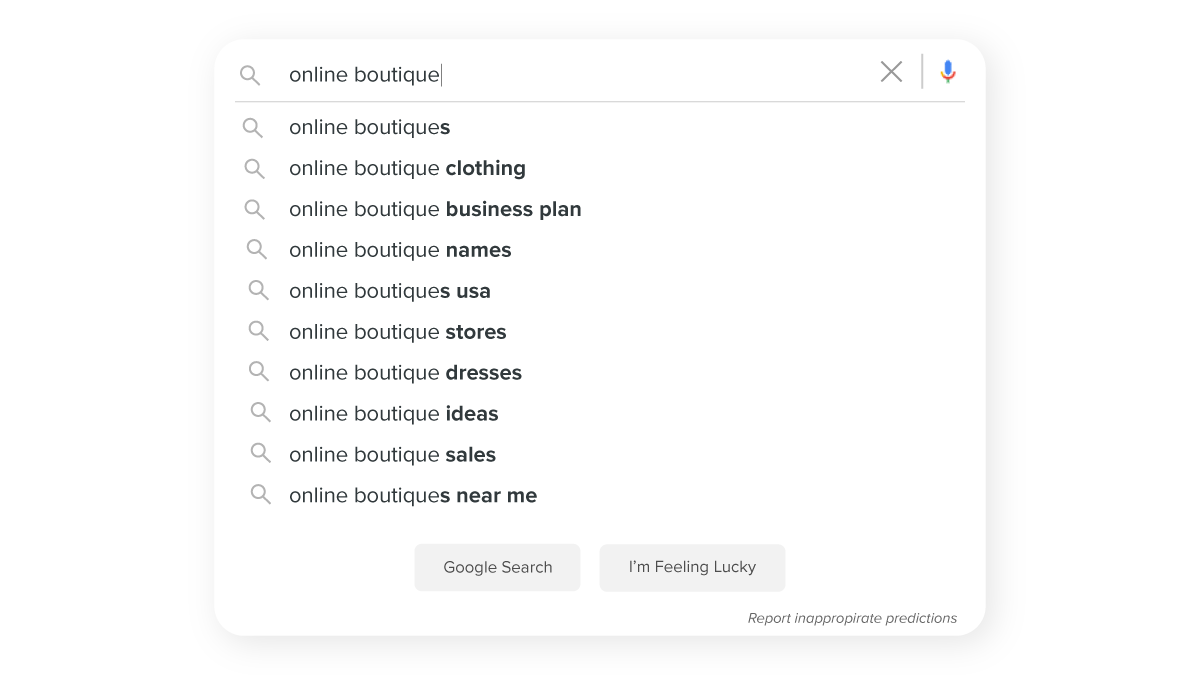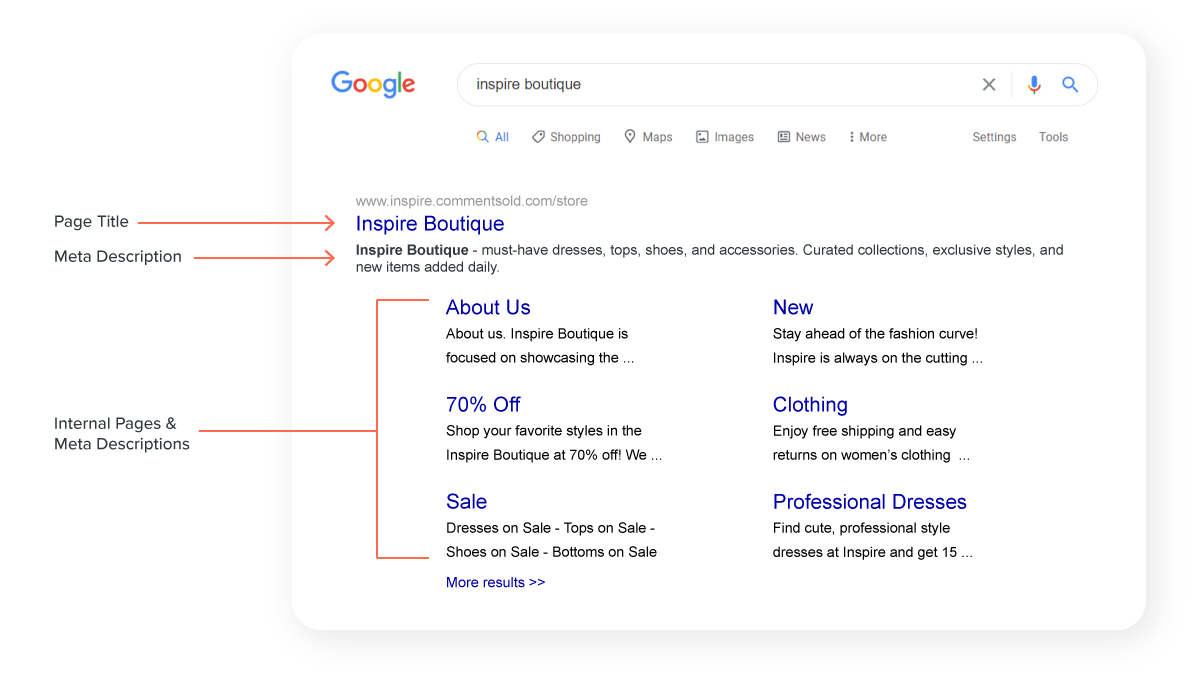Recent studies show that up to 81% of retail consumers begin their shopping experience with a simple online search.
If your website doesn’t show up in their results, you could miss out on a ton of opportunities to boost website traffic, meet new customers, and grow your revenue!
Let’s not get ahead of ourselves, though. First, we need to look at how you can gain that visibility. It all begins with an SEO strategy.
What Is SEO?
SEO (search engine optimization) is a strategy used to improve how often a website shows up in the results of major search engines, such as Google and Bing.
Optimizing your website makes it easier for search engines to find it and increases its page ranking, or the order in which it shows up in search results.
The Benefits of SEO for Online Retail
In the case of online shopping, “searcher behavior” really equates to “buyer behavior.” Because of this, there are some significant advantages to optimizing your retail website.
- Free Site Traffic
SEO will help you show up more often in organic (unpaid) search results. Paid search results are determined by an auction system, but organic search results are based on how well your site is optimized for search engines.
- Increased Conversions
Your ideal customers are searching for products all the time, which means they already have the intent to buy. Optimizing your product pages to include certain criteria makes it easier for buyers who are interested in those items to find them and buy them. Basically, SEO-optimized websites result in more purchases than just visits.
- Competitive Advantages
SEO is widely considered an essential part of any digital marketing strategy. Your competitors have likely already made it a priority to establish higher rankings. With an SEO strategy of your own, you can climb the rankings, and, ideally, show up in search results before your competitors do.
How Search Engine Optimization Works
The job of a search engine is to scan the design and content of a website to determine what the site is about, what searches it is relevant for, and if it is user friendly. This process, known as “crawling,” helps search engines provide the top related search results to their users.
Keywords, Considerations, & Research
Now that you know what SEO is and how it works, let’s discuss the foundation of SEO strategy: keywords.
Keywords
Simply put, keywords are words and phrases that people type into searches to find relevant content.
When search engines crawl a website, they look for these keywords to figure out what the site is about and how well it fits with certain topics. Then, it will use this information to figure out where it should show up in search results that are related to it. This is known as “page rank”.
With the right keywords, you can improve your page ranking. So, how do you know which keywords to add?
A well-optimized website will include keywords that users would type in to find categories, products, or specific brands, sizes, and colors.
Right off the bat, you can probably think of a few words your customers would type into searches to find your brand and products. Still, it will take some research and a few considerations to narrow your focus on the right keywords.
Volume
The first thing to consider is how often people are searching for a given keyword. If there’s high search volume for a particular keyword you’re using, you stand to reach a much bigger audience than if you include keywords that get little to none.
Google Autocomplete
To find trending, high-volume keywords, you can use a number of paid keyword research tools. However, if you’re just starting out, you can simply use Google’s autocomplete.
Google Autocomplete, also known as Google Auto-suggest, is a feature intended to make searches faster by auto-predicting a user’s search.

Autocomplete works by using information from millions of other Google searches. This gives business owners keywords that are popular, reliable, and relevant to use on their websites.
It’s important to note that Autocomplete won’t do all the work for you, but it’s an excellent place to start in your keyword research.
Competition
You’re probably thinking, “If these are popular keywords, aren’t my competitors trying to rank for them too?” Yes, absolutely! Finding high-volume keywords is only the first step of a prime SEO strategy.
After determining which keywords are trending on Google, you can use them to create long-tail keywords that will give you a fighting chance in page rankings.
Long-tail keywords consist of three or more words that form keyword phrases. These terms, in combination with popular keywords, should be extremely specific to what you are selling.
For example, an apparel retailer for women might know that their best seller is a pair of jeans. A search for “women’s jeans” would be too difficult to rank for.
Instead, they consider a phrase that their ideal customer might type in to land on their product page. “Judy Blue acid wash high wasted shorts” is much more specific phrase.
This long-tail keyword does two things. One, it has a lower volume, so it’s easier to compete for. Two, it helps searchers quickly identify specific items they intend to buy.
User Intent
By thinking about what the user wants, you can fine-tune your keyword strategy so that your ideal customer sees it more often.
For example, a search for “trendy women’s clothing” can bring up a number of related links, from style blogs to Pinterest boards, to Amazon links.
In the case of a plus-sized online women’s boutique, the keywords your ideal customer may be searching for are “plus-size clothing.”
Other times, a customer might already know which products they want to buy, so they will use much more specific keywords for a search. Including these in your product pages will help them find them more readily.
For example, if your ideal customers are searching for “black strappy sandal heels,” but your product page only mentions “strappy sandals,” then you missed out on the opportunity to rank for that phrase.
Users may also be typing in brand terms to find your website. Your brand name is a vital keyword that must be included on your home page.
How to Build an SEO-friendly Site
Remember, the main goal of optimizing your website is to make it friendlier to search engines and searchers alike. Make it easier for them by including relevant information, keywords, and improved site navigation.
Page Titles
Page titles are the distinct names of each of your webpages. The highest performing, most relevant keywords to describe your category and product pages should be displayed at the very start of your page titles.
Your homepage, however, should display your brand name first. Any other relevant keyword can follow.
Meta Descriptions
Meta descriptions are the small snippets of text displayed under a page title in search engine results. Meta descriptions are used to tell the user what a page is about in 160 characters or less.
With that in mind, meta descriptions should include a few keywords within a short, engaging description. Consider this an advertisement for your online store.
Its job is to encourage more clicks. The more clicks your site gets, the more importance search engines will assign it.

Here’s an example of how page titles & meta descriptions look in search listings.
Site Structure
E-commerce websites have many pages for search engines to crawl and users to sift through. Naturally, making it as easy as possible to navigate your site is a top priority.
By organizing and arranging your pages in a way that makes sense to users and search engines, you’ll provide a better user experience and improve your page ranking.
A basic rule of thumb is to keep every page on your site three or fewer clicks from your home page.
For example, your fixed navigation menu may include a page for bottoms and, under that, have a subcategory for shorts. In this instance, the site user who is looking for shorts can easily find shorts in only two clicks from the home page.
URLs
URLs should be as clear and readable as possible. Search engines won’t be able to discern what that page is about if your URLs look like a jumbled mess of words and numbers.
Fortunately, most websites built through e-commerce platforms will structure these URLs appropriately without any additional work.
The Takeaway
While SEO is not an overnight strategy, it’s undoubtedly an effective one. It drives increased brand discovery, targeted traffic, and conversions while providing a substantial competitive advantage.
With the right e-commerce platform, you can even get built-in tools to help optimize your website. Even newbies can begin their SEO strategy today!




